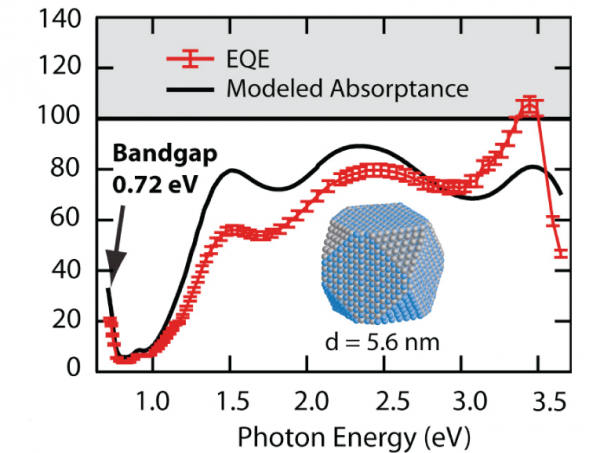According to recent reports, scientists at the National Renewable Energy Laboratory (NREL) made a groundbreaking announcement at the start of this year. They successfully developed a solar cell using quantum dot materials that achieved an external quantum efficiency (EQE) exceeding 100%, confirming the occurrence of multiple exciton generation (MEG). This discovery holds great promise for the future development of high-efficiency solar cells.
The NREL test structures consist of anti-reflective coated glass, transparent conductive layers, nanostructured zinc oxide layers, and lead selenide quantum dot layers treated with ethanedithiol and hydrazine. This marks the first time that quantum dot solar cells have demonstrated an EQE above 100%. Although the overall power conversion efficiency of the device is currently only 4.5% without optimization, the demonstration of MEG in the photocurrent is still a major breakthrough. It opens up new possibilities for improving solar cell performance and pushing the limits of energy conversion.
External quantum efficiency measures the ratio of electrons generated per unit time to the number of photons incident on the solar cell surface during the same period. In this study, the NREL cell showed an EQE of 114% for photons with an energy of 3.5 eV. An EQE over 100% indicates that a single high-energy photon can generate multiple excitons—a phenomenon known as multiple exciton generation. In traditional silicon-based solar cells, excess energy from high-energy photons beyond the bandgap is typically lost as heat, limiting their theoretical efficiency. Quantum dots, however, can confine charge carriers in a small volume, enabling the production of multiple excitons and making better use of the energy from high-energy photons, thus significantly boosting efficiency.

The NREL battery has a photon external quantum efficiency of energy of 3.5eV of 114%. The quantum efficiency exceeds 100%, which means that solar cells absorb single high-energy photons and generate multiple excitons, so-called multiple exciton generation effects.
Currently, research institutions in China are also exploring the potential of multiple exciton generation. For example, the "Study on Multiple Exciton Generation of Semiconductor Nanomaterials" project led by the Micro-Nano Optics and Ultrafast Optics Laboratory at Nanjing University received 900,000 yuan in funding from the National Natural Science Foundation of China. Meanwhile, the Yan Qingling Industrial Research Center at Taiwan University is working on multi-exciton quantum dot polymer solar cells. Additionally, researchers such as Zeng Yiping from the Institute of Semiconductors, Chinese Academy of Sciences, and Professor Tang Jiang from the Wuhan National Laboratory for Optoelectronics have published review articles on this topic, further highlighting the growing interest and importance of MEG in photovoltaic research.
High-power gear motors provide unparalleled speed and torque performance, durability and high-performance energy-saving operation. Their excellent performance has been widely used in various application fields. Their accuracy and torque can well meet customer needs. It is an entry-level equipment that provides simple and effective transmission solutions specifically for your application.
Gear reducer motor, micro motor, mini motor
Changzhou Yuanwang Fluid Technology Co., Ltd. , https://www.ywfluid.com